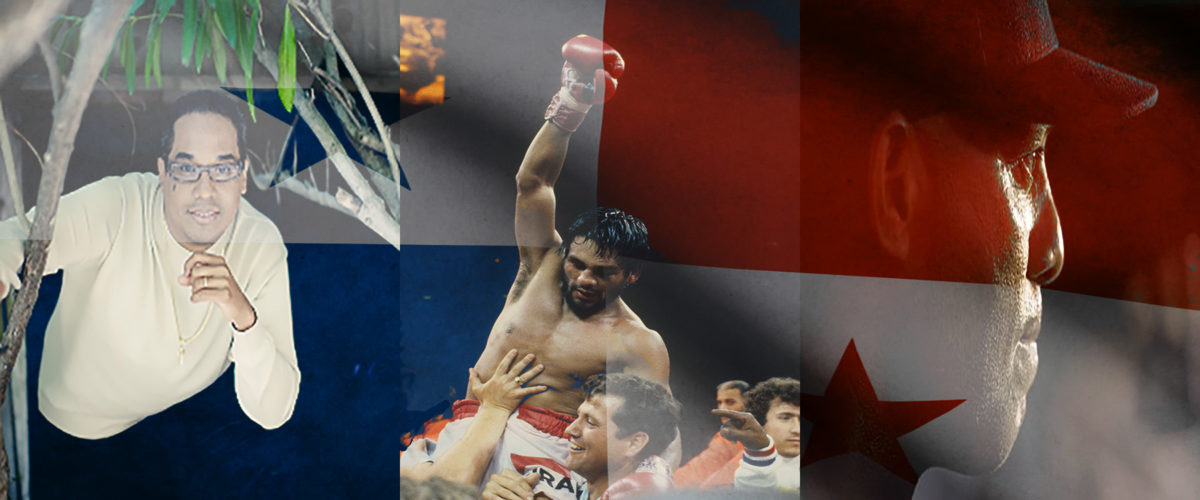Panama is a country known for many things from the political strife it has endured, to it’s contributions to the world of music and sports, to its largest architectural wonder the Panama Canal. However, it has also produced men that have not only paved successful paths in life, but iconic ones. In celebration of the Republic of Panama’s Independence Day, we highlight five Panamanian you’d better know about.
1. Mariano Rivera
It’s impossible to discuss Mariano Rivera without admiring the man he’s been — on and off the field. Since 1995, the smooth Panama-born slinger has been as synonymous with the New York Yankees as any other man to wear the pinstripes. For two decades, Rivera was one of the most feared closers in Major League Baseball. In an industry obsessed with numbers Rivera delivered. He set the record for most career saves still standing at 652; he earned 13 All-Star nods; was a World Series MVP and helped the Yankees win no less than five World Series titles, three in a row from 1998 to 2000.
Yet his off-field reputation is just as remarkable. A well-known philanthropist, his Mariano Rivera Foundation is highly regarded for its contributions to various efforts throughout Panama and for its involvement in the Christian community. You know you are respected when the opposition tips their cap to you. In 2013, his farewell season opposing teams and fans honored Rivera. He received a “Chair of Broken Dreams” from the Minnesota Twins — forged with the splinters of bats Rivera broke with his infamous cutter; the Cleveland Indians honored Mo with a gold record of “Enter Sandman” his eponymous theme song by Metallica — selected for his ability to put opponents to sleep; and even the Boston Red Sox, a bitter Yankees rival, honored Rivera with an elaborate tribute, acknowledging Rivera as “a real gentleman, a fierce competitor and a most worthy opponent.”
However, the highest honors we doled out by the only baseball organization he has ever known. The Yankees named September 22nd – Mariano Rivera Day and retired Rivera’s number 42, making him the last MLB player to wear the number since the league-wide retirement of Jackie Robinson’s sacred “42” in 1997.
2. Rubén Blades
Rubén Blades Bellido de Luna is a true renaissance man. The Panamanian singer, songwriter, actor, musician, activist and politician has not only done it all, but done it superbly. He began his career writing and performing Afro-Cuban salsa and Latin Jazz along-side fellow greats Willie Colon and The Fania All Stars. The creator of dozens of hits including the indelible “Pedro Navaja” and what many consider the second national anthem of Panama – “Patria”, he’s won over eight Grammy awards during his musical career. While some may stop at that, not Blades, he’s also been on the big screen appearing in such films as The Milagro Beanfield War and Crossing Over, along with three Emmy Award nominations for his performances in The Josephine Baker Story, Crazy from the Heart and The Maldonado Miracle. Yet, he hasn’t limited his talent or ambition to entertainment, he put that LLM Degree he earned at Harvard Law School to good use, when he made a run for the Presidency of Panama in 1994. Although not victorious he earned 18% of the vote. Moreover, we may not have seen the last of Blades in the political world. He has recently expressed his interest in making another run for president of Panama in 2019.
3. Danilo Perez
Bringing people together through music has been Danilo Perez’s life work. When the United States invaded Panama in 1989, musician Danilo Perez flexed his diplomatic muscle by performing a death-defying concert in the capital. The pianist/composer/educator’s show attracted everyone, even the soldiers from the conflict. It was an early example of what earned Perez title of Goodwill Ambassador for UNESCO, the scientific and cultural arm of the United Nations. Perez was chosen for the prestigious title because, as UNESCO Director-General Irina Bokova remarked at his nomination ceremony, his music embodied “the dynamics of cultures, the way in which they influence each other and are continuously reconstituted.”
Born in Panama in 1965, his bandleader/singer father taught him to play the drums when he was just three years old. The elder Perez also inspired his son to use music to learn other subjects. “I had an incredible teacher in my father, who viewed music as a very powerful tool to change people’s lives,” Perez has said.
“I am committed to being a messenger of peace, to unite people, to create dialogue through jazz,” Perez said during an interview from his Boston-area home. His commitment is clear from his choice of projects. Perez has served as a Panamanian Cultural Ambassador, teaches at his alma mater and The New England Conservatory of Music. He also works as the artistic director of The Panama Jazz Festival, now in its tenth year, which was held in Panama City this month. Danilo Perez’s dedication to education and his immersion and mastery of the global art of jazz, form the blueprint of his amazing and enduring success. “Jazz is a declaration against all forms of oppression,” Perez proclaims. “It speaks the language of freedom.”
Image Courtesy of Danilo Perez
4. Roberto Duran
He’s a living legend, but most of all, one of the baddest men to ever step foot in the boxing ring. The common fan may know him more for the “No Mas” debacle, but true sports fans, think of the man called “Manos de Piedra,” or “Hands of Stone,” as a devastating alloy of power, speed, technique, and braggadocio, a fighter who deserves to be in the discussion of the all-time greats.
Born to a Mexican-American marine and a Panamanian mother and raised in the Chorrillo slum of Panama City, in 1951, Roberto Duran quit school after third grade and hit the streets. In his early teens, he started boxing, emulating his brother and hoping his fists might punch a way out of the barrio. He made his professional debut in February 1968, at just 16. Duran eventually won 30 in a row before his first pro loss, and in 1972, he got his first title shot, against lightweight world champion Ken Buchanan who was a heavy favorite. Duran beat him to a pulp. It was the kind of beating that a great old pro would know how to administer.
Duran would go on to own the lightweight division for six years, but he craved more So, in 1979, he relinquished his belt and jumped to the welterweight division that offered bigger paydays and higher-profile opponents, like Sugar Ray Leonard. The fighter that would essentially become Duran’s “white whale.” David Avila, a journalist who grew up in an East L.A. boxing family, recalls the fight as a watershed moment.
“When Duran beat Sugar Ray Leonard, who was perceived as ‘America’ by a lot of the Latinos, who were subservient in everything at that time, it was huge,” Avila says. “He was a no-nonsense, take-no-prisoners kind of guy,” Avila says. “We loved him for that.”
The ups, downs and ups of the remainder of this career are well chronicled and this year became of the subject the biographical film Hands of Stone, starring Edgar Ramirez as Duran and Robert DeNiro as his trainer Ray Arcel. Additionally, Ring Magazine named Duran the fifth best fighter of the previous 80 years. In 2007, when he was inducted into the International Boxing Hall of Fame, an honor that seemed to do more than just validate his career; it officially forgave him for No Mas and allowed him once again to be his homeland’s champion he stated “My country is being inducted as well,” he said, shawled in the Panamanian flag during his induction speech. “The country where I was born, where I live, and where I will die. I’m happy, proud.”
5. Karl Kani
Karl Kani, was hip hop’s first fashion mogul. Before there was Phat Farm, Sean Jean or Roca Wear, every relevant hip hop artist in the 90’s and early 2000’s was either rocking or giving shout outs to Karl Kani. Born Carl Williams, the son of a Costa Rican mother and Panamanian father, he came from humble beginnings in Brooklyn, New York (prior to the current hipster haven era). At a young age Karl dreamt of combining his passion for Hip Hop music and fashion. At age 16, Williams started designing clothes after learning the essential handcraft at his father’s company. He never studied tailoring or design, but had a natural talent for creating unusual concepts. He would buy material and tell a tailor exactly how he wanted his garments to look. “For a relatively small sum”, as he put it, “I had a fresh outfit that nobody had.” The outfits caught people’s attention, so much so they asked Williams to make an outfits for them, before he knew it he was taking orders and selling out of his car. After many fits and starts, as the story goes, Williams enlisted a friend to hold up a sign with his label’s name on it in front of The Today Show during a live taping. Presto Karl Kani was on the map and the rest as they say is history. Several iterations of the Kani brand would be released, millions made and awards garnered. Williams was named on the 100 richest African-Americans by People Magazine, Black Enterprise Magazine named Karl Kani Infinity Corporation the most successful African-American owned firms worldwide in 1996 and Kani was also honored with an ‘Urban Fashion Pioneer Award’ for his lifetime achievements during the Urban Fashion Awards.

